Hyundai i30 vs Kia Niro – Performance, range & efficiency compared
Costs and Efficiency:
When it comes to price and running costs, the biggest differences usually appear. This is often where you see which car fits your budget better in the long run.
Hyundai i30 has a evident advantage in terms of price – it starts at 24000 £, while the Kia Niro costs 29100 £. That’s a price difference of around 5143 £.
Fuel consumption also shows a difference: Kia Niro manages with 2.40 L and is therefore decisively more efficient than the Hyundai i30 with 5.70 L. The difference is about 3.30 L per 100 km.
Engine and Performance:
Power, torque and acceleration are the classic benchmarks for car enthusiasts – and here, some clear differences start to show.
When it comes to engine power, the Kia Niro has a evident edge – offering 180 HP compared to 140 HP. That’s roughly 40 HP more horsepower.
In acceleration from 0 to 100 km/h, the Hyundai i30 is hardly perceptible quicker – completing the sprint in 9.60 s, while the Kia Niro takes 9.90 s. That’s about 0.30 s faster.
In terms of top speed, the Hyundai i30 performs slight better – reaching 197 km/h, while the Kia Niro tops out at 185 km/h. The difference is around 12 km/h.
There’s also a difference in torque: Kia Niro pulls minimal stronger with 265 Nm compared to 253 Nm. That’s about 12 Nm difference.
Space and Everyday Use:
Cabin size, boot volume and payload all play a role in everyday practicality. Here, comfort and flexibility make the difference.
Both vehicles offer seating for 5 people.
In curb weight, Hyundai i30 is to a small extent lighter – 1291 kg compared to 1474 kg. The difference is around 183 kg.
In terms of boot space, the Kia Niro offers slightly more room – 451 L compared to 395 L. That’s a difference of about 56 L.
In maximum load capacity, the Kia Niro performs minimal better – up to 1445 L, which is about 144 L more than the Hyundai i30.
When it comes to payload, Hyundai i30 barely noticeable takes the win – 509 kg compared to 466 kg. That’s a difference of about 43 kg.
Who wins the race?
The Kia Niro proves to be wins the duel decisively and therefore becomes our DriveDuel Champion!
Kia Niro is the better all-rounder in this comparison.
Costs and Consumption
View detailed analysis
Engine and Performance
View detailed analysis
Dimensions and Body
View detailed analysis
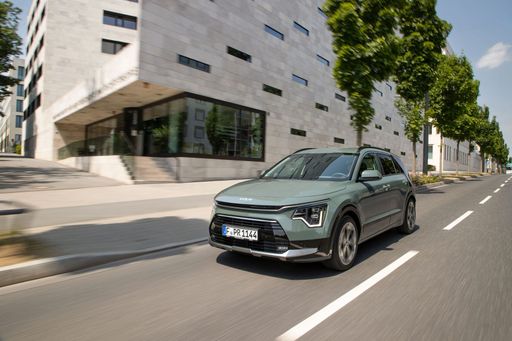 @ Kia Corporation
@ Kia Corporation
Kia Niro
Hyundai i30
The Hyundai i30 proves that sensible can also be stylish, offering a confident driving character wrapped in neat, modern design. It serves up a roomy, well-equipped cabin and composed ride that make everyday motoring feel like a clever purchase rather than a compromise.
details @ Hyundai Motor Company
@ Hyundai Motor Company
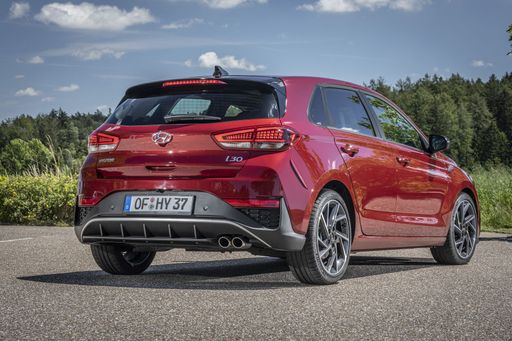 @ Hyundai Motor Company
@ Hyundai Motor Company
 @ Hyundai Motor Company
@ Hyundai Motor Company
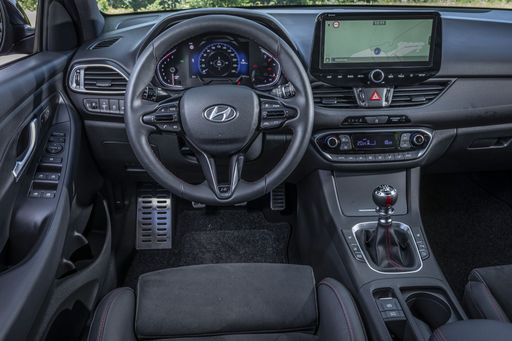 @ Hyundai Motor Company
@ Hyundai Motor Company
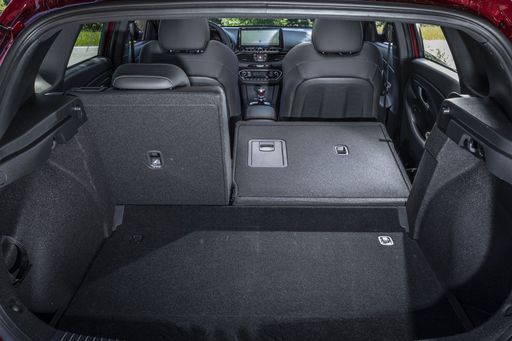 @ Hyundai Motor Company
@ Hyundai Motor Company
Kia Niro
The Kia Niro blends clever packaging and modern styling into a compact crossover that’s refreshingly sensible for daily life. It’s comfortable, economical and packed with user‑friendly tech, so if you want a fuss‑free family car with a touch of green credibility, the Niro is worth a test drive.
details @ Kia Corporation
@ Kia Corporation
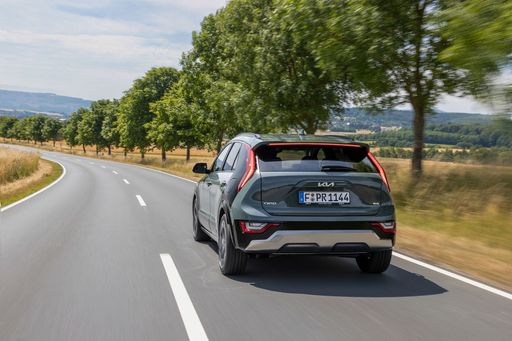 @ Kia Corporation
@ Kia Corporation
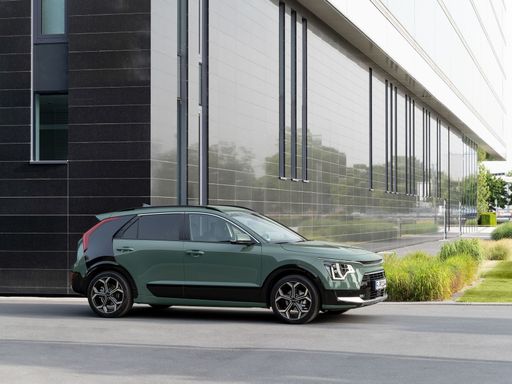 @ Kia Corporation
@ Kia Corporation
 @ Kia Corporation
@ Kia Corporation
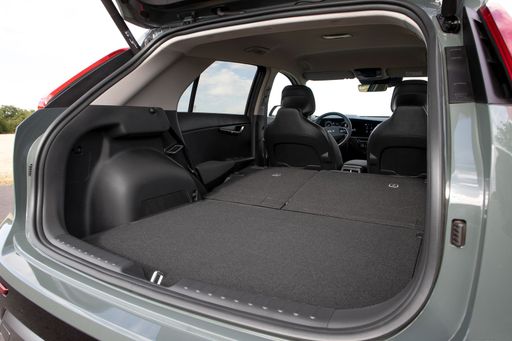 @ Kia Corporation
@ Kia Corporation
 @ Hyundai Motor Company
@ Hyundai Motor Company
|
 @ Kia Corporation
@ Kia Corporation
|
|
|
|
Costs and Consumption |
|
|---|---|
|
Price
24000 - 29300 £
|
Price
29100 - 38600 £
|
|
Consumption L/100km
5.7 - 6 L
|
Consumption L/100km
2.4 - 4.9 L
|
|
Consumption kWh/100km
-
|
Consumption kWh/100km
-
|
|
Electric Range
-
|
Electric Range
57 - 62 km
|
|
Battery Capacity
-
|
Battery Capacity
1.3 - 11.1 kWh
|
|
co2
130 - 136 g/km
|
co2
53 - 111 g/km
|
|
Fuel tank capacity
50 L
|
Fuel tank capacity
37 - 42 L
|
Dimensions and Body |
|
|---|---|
|
Body Type
Hatchback
|
Body Type
SUV
|
|
Seats
5
|
Seats
5
|
|
Doors
5
|
Doors
5
|
|
Curb weight
1291 - 1407 kg
|
Curb weight
1474 - 1594 kg
|
|
Trunk capacity
395 L
|
Trunk capacity
348 - 451 L
|
|
Length
4340 mm
|
Length
4420 mm
|
|
Width
1795 mm
|
Width
1825 mm
|
|
Height
1455 mm
|
Height
1545 mm
|
|
Max trunk capacity
1301 L
|
Max trunk capacity
1342 - 1445 L
|
|
Payload
463 - 509 kg
|
Payload
466 kg
|
Engine and Performance |
|
|---|---|
|
Engine Type
Petrol, Petrol MHEV
|
Engine Type
Full Hybrid, Plugin Hybrid
|
|
Transmission
Manuel, Automatic
|
Transmission
Automatic
|
|
Transmission Detail
Manual Gearbox, Dual-Clutch Automatic
|
Transmission Detail
Dual-Clutch Automatic
|
|
Drive Type
Front-Wheel Drive
|
Drive Type
Front-Wheel Drive
|
|
Power HP
100 - 140 HP
|
Power HP
138 - 180 HP
|
|
Acceleration 0-100km/h
9.6 - 13.1 s
|
Acceleration 0-100km/h
9.9 - 11.4 s
|
|
Max Speed
178 - 197 km/h
|
Max Speed
170 - 185 km/h
|
|
Torque
172 - 253 Nm
|
Torque
265 Nm
|
|
Number of Cylinders
3 - 4
|
Number of Cylinders
4
|
|
Power kW
74 - 103 kW
|
Power kW
102 - 132 kW
|
|
Engine capacity
998 - 1482 cm3
|
Engine capacity
1580 cm3
|
General |
|
|---|---|
|
Model Year
2024
|
Model Year
2025
|
|
CO2 Efficiency Class
D, E
|
CO2 Efficiency Class
C, B
|
|
Brand
Hyundai
|
Brand
Kia
|
What drive types are available for the Hyundai i30?
Available configurations include Front-Wheel Drive.
The prices and data displayed are estimates based on German list prices and may vary by country. This information is not legally binding.
